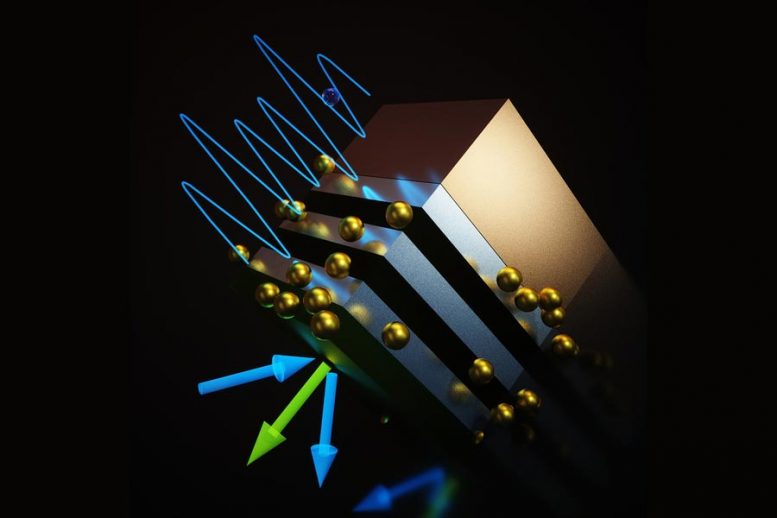
The setup for the milli-electronvolt inelastic X-ray scattering that probes the many-body localization in the disordered superlattice system. Credit: Image courtesy of the researchers
In a study that could benefit
MBL had been demonstrated in “optical lattices,” arrangements of atoms at very cold temperatures held in place using lasers. But such setups are impractical. MBL had also arguably been shown in solid systems, but only with very slow temporal dynamics, in which the phase’s existence is hard to prove because equilibrium might be reached if researchers could wait long enough. The MIT research found a signatures of MBL in a “solid-state” system — one made of semiconductors — that would otherwise have reached equilibrium in the time it was watched.
“It could open a new chapter in the study of quantum dynamics,” says Rahul Nandkishore, a physicist at the University of Colorado at Boulder, who was not involved in the work.
Mingda Li, the Norman C Rasmussen Assistant Professor Nuclear Science and Engineering at MIT, led the new study, published in a recent issue of Nano Letters. The researchers built a system containing alternating semiconductor layers, creating a microscopic lasagna — aluminum arsenide, followed by gallium arsenide, and so on, for 600 layers, each 3 nanometers (millionths of a millimeter) thick. Between the layers they dispersed “nanodots,” 2-nanometer particles of erbium arsenide, to create disorder. The lasagna, or “superlattice,” came in three recipes: one with no nanodots, one in which nanodots covered 8 percent of each layer’s area, and one in which they covered 25 percent.
According to Li, the team used layers of material, instead of a bulk material, to simplify the system so dissipation of heat across the planes was essentially one-dimensional. And they used nanodots, instead of mere chemical impurities, to crank up the disorder.
To measure whether these disordered systems are still staying in equilibrium, the researchers measured them with X-rays. Using the Advanced Photon Source at Argonne National Lab, they shot beams of radiation at an energy of more than 20,000 electron volts, and to resolve the energy difference between the incoming X-ray and after its reflection off the sample’s surface, with an energy resolution less than one one-thousandth of an electron volt. To avoid penetrating the superlattice and hitting the underlying substrate, they shot it at an angle of just half a degree from parallel.
Just as light can be measured as waves or particles, so too can heat. The collective atomic vibration for heat in the form of a heat-carrying unit is called a phonon. X-rays interact with these phonons, and by measuring how X-rays reflect off the sample, the experimenters can determine if it is in equilibrium.
The researchers found that when the superlattice was cold — 30 kelvin, about -400 degrees